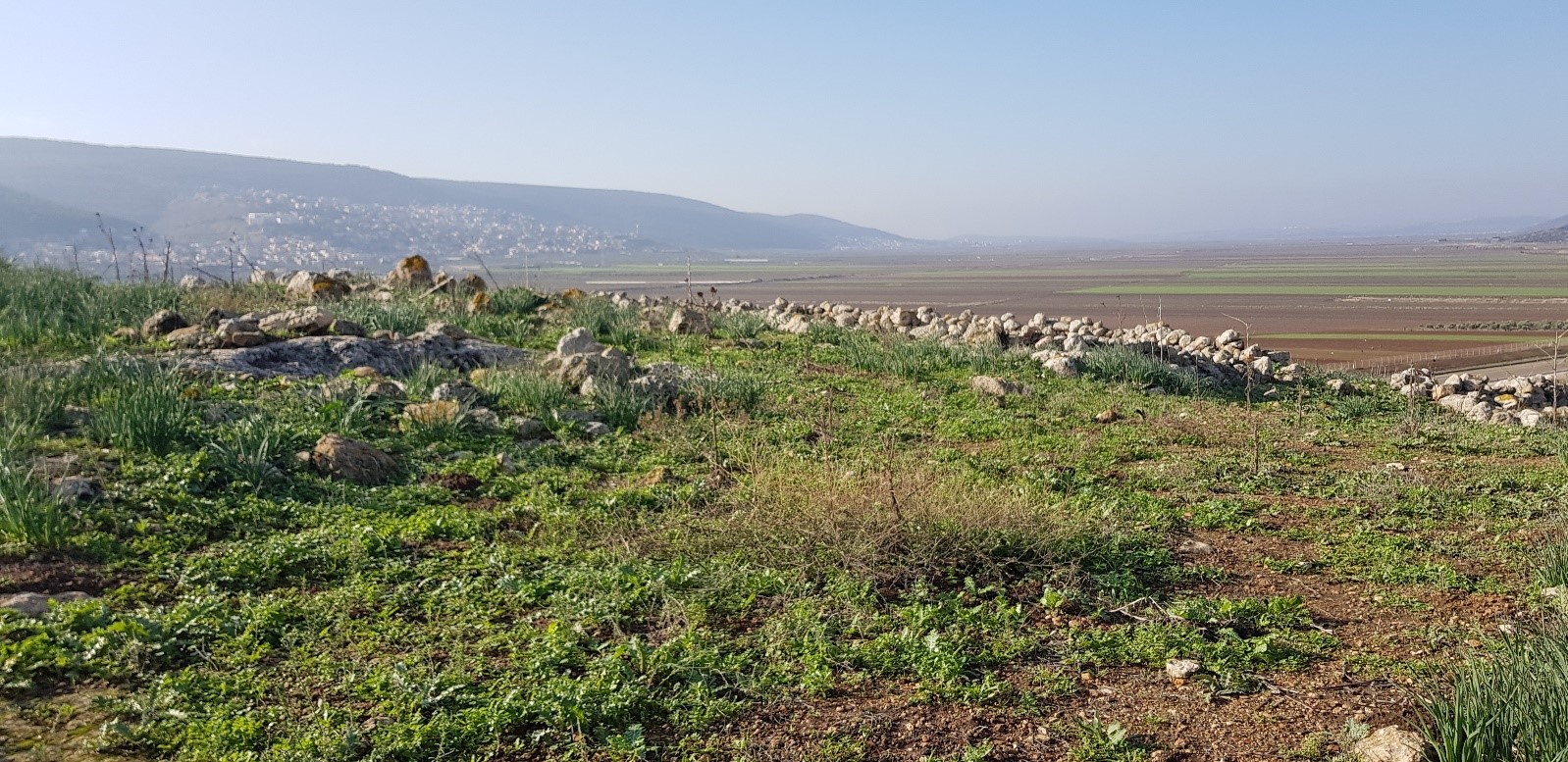Khirbet Beit Netofa is a site extending about 5 hectares located on top of a small hill at the eastern end of the Netofa Valley, in Galilee, the northern part of the state of Israel, close to the modern city of Eilabun.
The site is exceptional in many ways. First of all Netofa is mentioned in rabbinic literature and in texts from the Crusades and Ottoman periods. On the other hand, the site although listed, has never been excavated, a rare case in Israel. It thus offers a site free of modern contamination and so increases research issues without bias.
During various surface surveys, pottery shards were collected from the Iron IIC period (8th-6th th century BCE) to the Mameluke period (13th-16th century) and from the Roman and Byzantine period (1st -7thth century CE), which shows a long lasting occupation of the site. In the same way, on field-walking, many architectural elements emerge. Moreover, aerial photographs show real buildings. Those elements coupled with the geographical situation offer the ground of a long term reasoned study of a rural site in Galilee. Until now, long-term archaeological studies have mainly been carried out on urban sites in Galilee.

Door sill © R. Aligon (UNIL)
In view of all these elements, it is clear that a long-term project, several excavation campaigns over several years, seems necessary in order to carry out a thorough scientific investigation about the resident population and their way of life, on their material culture, on the fauna, and the flora…

For example, the study of tanks can give us information on the number of inhabitants, on storage methods, on the various products stored...
Collecting elements of fauna (bones, eggs, etc.) and flora (pollen, seeds, etc.) helps determine the diet of the population and in fine the types of livestock and cultivation as well as the climate and natural resources of the relevant periods.

The different stone alignments on the surface prove the existence of underlying structures. The excavation also aims to analyze them in order to determine their function (public building, fortification, dwelling, etc.), their date of erection and use. The synthesis of these data will allow to characterize the site in itself and to discuss a social organization and its evolution according to the different epochs.


